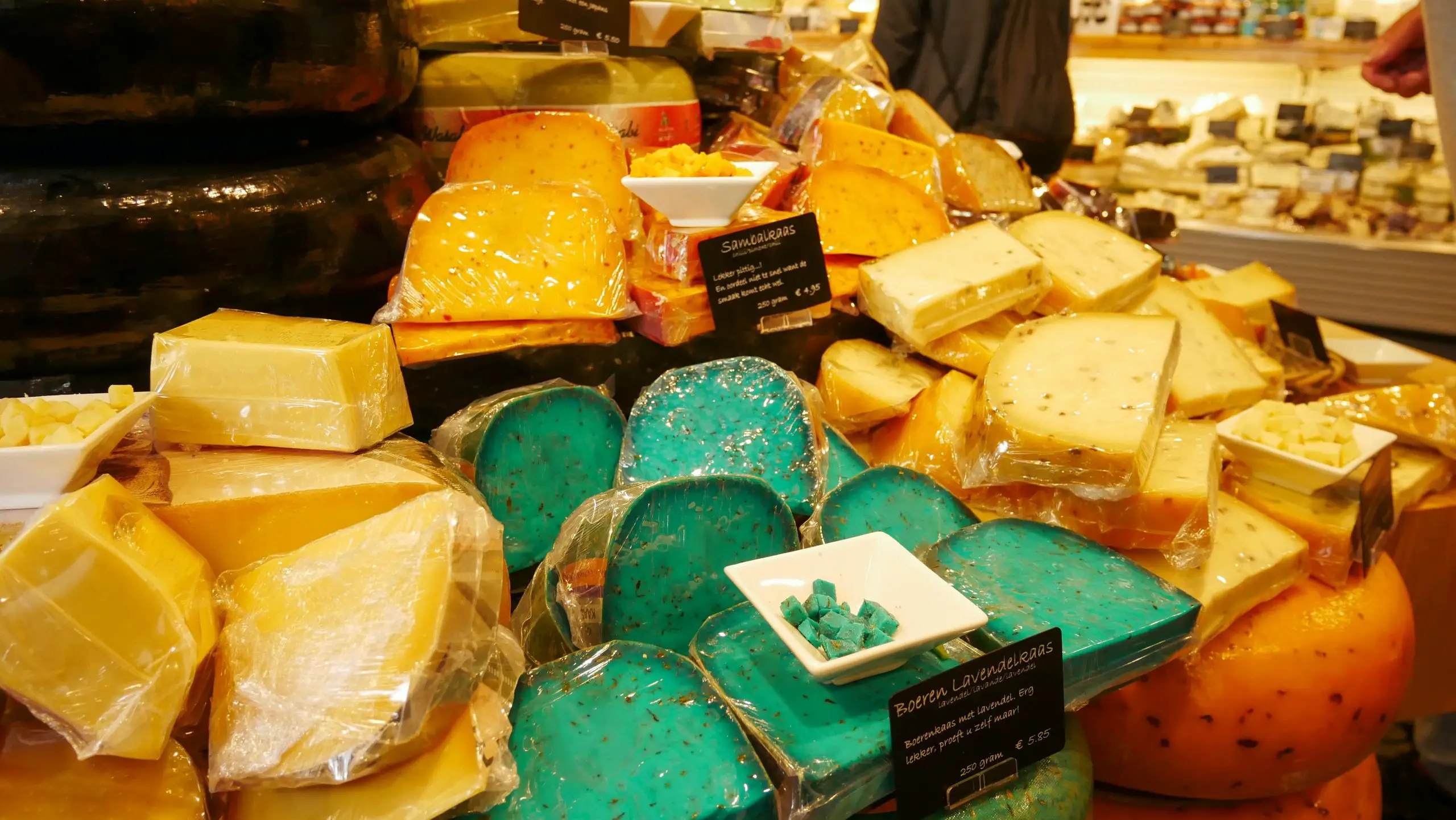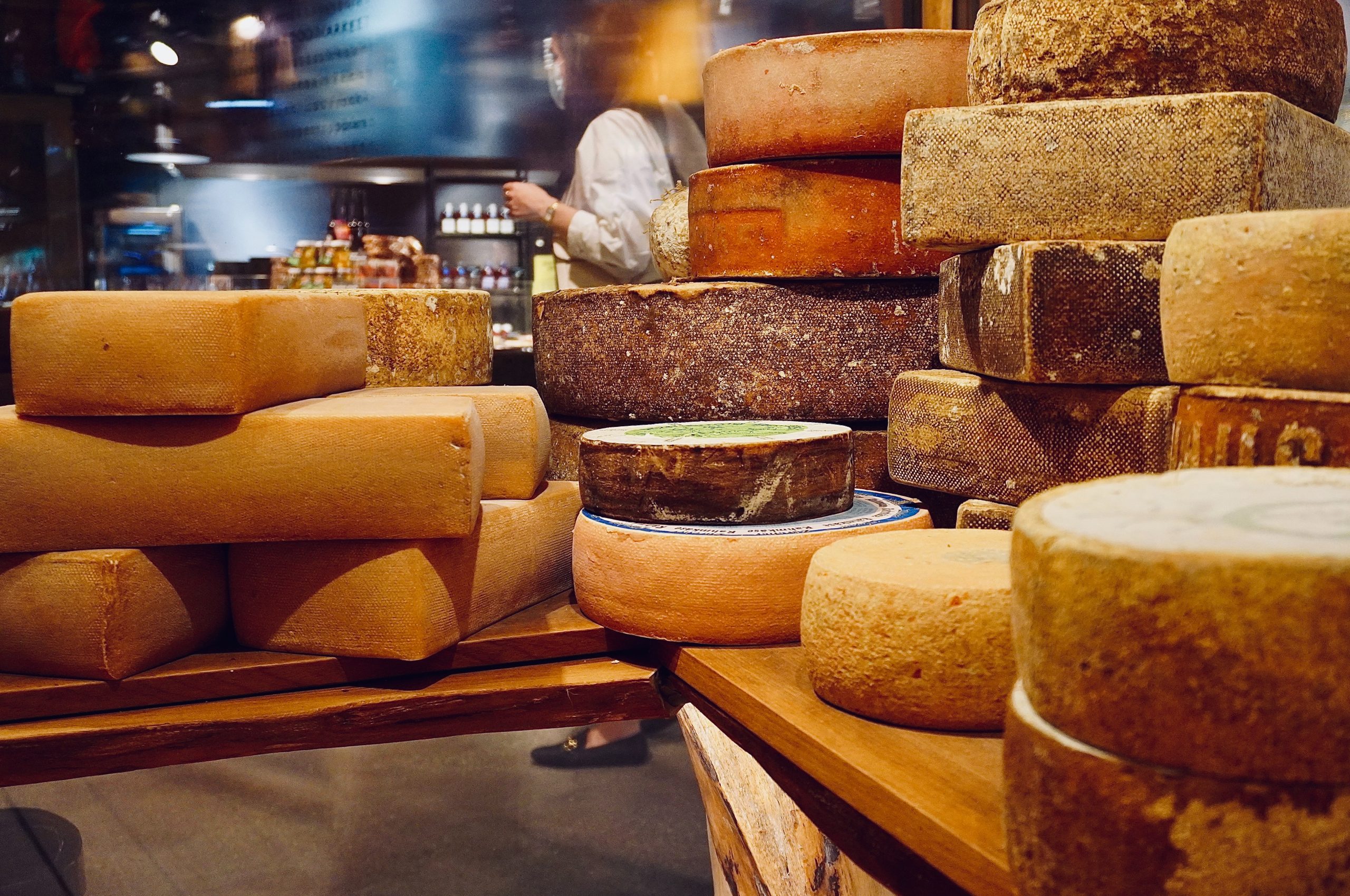Whether you’re looking for tips on how to store cheese for your holiday gathering or a quick guide to how to store your favorite cheeses for your everyday meals, you’ll find that this article has you covered. The key to keeping your cheese fresh is to keep it in the fridge. While you’re at it, you can also try wrapping it in paper or plastic wrap to help ensure that it stays fresh for longer.

Tips on How to Store Cheese
All kinds of cheese should be kept in the refrigerator’s vegetable crisper, where the temperature is consistently cold.
After each use, rewrap the cheese in wax paper or plastic wrap using a fresh piece.
Each type of cheese has a different shelf life, but generally, the harder the cheese, the longer it will keep.
Store Cheese
Hard, aged cheeses (such as aged Gouda and Parmigiano-Reggiano): Wrap in wax or parchment paper, then cover with plastic wrap.
Wrap plastic the blue cheeses (Gorgonzola, Roquefort).
Hard and semi-hard cheeses (such as Gruyere, Swiss, and Cheddar): Put plastic wrap on.
Cheeses that are soft, semi-soft, or pungent (like goat, Camembert, Brie, and Limburger): Put inside a plastic bag that can be closed.
Fresh cheeses (such as Feta or mozzarella) in water. Keep the cheese in its original container while replacing the water every few days.
Storage in the Fridge
Keeping cheese in the fridge is important for its quality. Cheese is a living food that needs breathing room to stay fresh. Leaving it out for a long time can lead to spoilage.
The best place to store cheese is in the vegetable drawer of your refrigerator. The vegetable drawer is cooler than the rest of the refrigerator and has higher humidity levels.
To keep your cheese fresh, you can put it in a large plastic container or wrap it on paper. Using cheese paper, which is specially designed for cheese storage, is a good choice.
If you don’t have a fridge, leave it on the counter. To prevent mold growth, rub the cut face with vegetable oil. You can also put a damp cloth inside the storage container.
Storage in Plastic Wrap
Choosing the right way to store your cheese will prevent it from going bad. The right packaging will keep your cheese moist, fresh, and flavorful.
The proper cheese storage method will prevent your cheese from spoiling and ensure your safety. Aside from storing your cheese in the proper container, it would be best to label it properly.
While you may be tempted to wrap your cheese in plastic after you’ve finished eating, this practice can affect the quality of your cheese. This is because the plastic absorbs the chemicals found in the cheese. These chemicals can also cause off-flavors. This is especially true if your cheese has been exposed to light.
The ideal cheese storage method should balance air flow, humidity, and sogginess. To ensure this, you should wrap your cheese in two layers. One layer will be a barrier and prevent moisture from escaping, while the second layer will provide additional protection.
Storage in Brine
Whether you are making fresh or aged cheese, brine is important for preserving the quality and texture. It helps absorb excess moisture from the surface of the cheese and adds more salt to the flavor. It is also used for cleaning and curing cheese.
The use of brine for aging cheese has been around for centuries. In ancient times, the Mediterranean shores were a source of cheese storage. Today, family enterprises are producing brined cheese. It can be produced from partially ultrafiltered milk using several processes.
When storing cheese, it is best to choose a brine that matches the pH level of the final cheese. Soft cheeses tend to stay softer as they age, while hard cheeses get harder.
Storage in Paper
Using cheese paper to store your cheese is an important way to keep it fresh and odor free. It is also a good idea to use adhesive labels to mark the type of cheese you have.
Using parchment or wax paper to wrap your cheese is also a good idea. These two materials are similar to cheese paper and work just as well.
If you are unsure how to store your cheese, you may consider a plastic bag or envelope. These are designed to prevent your cheese from drying out and are a good choice for softer cheeses. Alternatively, you can choose to wrap your cheese in aluminum foil. However, these materials are not as breathable as cheese paper and will not give you the same level of air exchange as cheese paper.
What are the Best Cheese Storage Containers?
It’s crucial to remember that there are several methods for storing cheese, which will vary depending on the sort of cheese you have, such as hard or soft cheese. While certain cheeses require specific storage containers, others can be wrapped in cheese paper or cling film and preserved just fine.
Cheese with a lower moisture content generally keeps longer. Bacteria need food and moisture to survive. Because hard cheeses like parmesan have a low moisture content, it is preferable to wrap them in clingfilm rather than waxed cheese paper (or baking parchment). This is due to the paper’s ability to let air through, which will cause the cheese to dry out.
Soft cheeses need to be able to breathe since they contain more moisture. Soft cheeses shouldn’t be wrapped in clingfilm since doing so prevents them from breathing and causes them to “sweat.” Soft cheeses that aren’t allowed to breathe can develop ammonia fumes, destroying your carefully chosen buy by tainting the flavor.
Therefore, it is recommended to wrap soft cheeses in waxed cheese paper, parchment paper, or reusable waxed cloth before placing them in a plastic container. Add a piece of moistened kitchen towel to the container to assist in controlling the humidity and environment if you have a particularly challenging cheese. Additionally, storing cheese in an airtight container will help keep the odor from escaping.
To keep at its finest, every cheese needs cool air and a certain amount of humidity. In the past, cheeses were frequently stored in stone barns since they were typically dim, damp, and naturally cool. Products like the cheese cave and similar ones are available if you want to recreate this setting. The updated version of the cheese cave safeguards cheese and keeps it at a humidity level of 75%. These can be stored in a refrigerator or on the counter.
It is vital to follow the manufacturer’s instructions when keeping your cheeses and eating them before the expiration date. Most of us keep cheese in the refrigerator since most don’t have access to specialty cheese shops.
Can you Eat Cheese that has Mould on it?
Some cheeses, like stilton, include mold on purpose. To enhance the flavor of the cheese, blue and white vein mold is added; it grows along the cheese’s fissures and air pockets. The blue (and white) molds represent several penicillin genus strains.
The Penicillium roqueforti strain was specifically chosen for cheese because it provides flavor and is responsible for the distinctive flavor and appearance of blue cheese. At the same time, Penicillium camemberti is utilized for surface-ripened cheeses that develop a white, fuzzy edge, like brie and camembert. Because they do not produce the same mycotoxins that can be produced in other foods, these penicillin molds are perfectly safe to consume.
Mold, however, can alter the flavor of some cheeses and, like any meal, can also make you feel ill. Although you may use the above-described proper storage methods, the cheese won’t survive forever, and you might notice undesirable mold growth.
High moisture content cheese, like soft cheese, has a higher risk of becoming moldy more quickly because it creates a favorable habitat for bacteria to flourish. While most bacteria are unharmful or necessary for our healthy digestive systems, some can be unpleasant. Bacteria require food and moisture to survive.
You must take steps to cheese that has undergone mold ripening may be susceptible to the listeriosis-causing pathogen, Listeria monocytogenes. Pregnant women are more at risk from this condition. You must take steps to limit the oxygen passage to the cheese and maintain a consistent temperature to reduce the likelihood of unwelcome bacterial growth. To lower the danger of food poisoning, it is also necessary to follow food hygiene training standards, especially in commercial and food-related contexts.
Reference: Effect of moisture content and water mobility on microwave expansion of imitation cheese
Can you Store Cheese in its Original Packaging?
Cheese experts even go so far as to advise against storing cheese in its original wrapping and that you should rewrap cheese as soon as you arrive home.
When cheese is preserved, it should be rewrapped in brand-new, clean cheese paper, advises Wells.
The solution becomes a little more complicated depending on the cheese and the original packaging.
“For example, Epoisses cheese may be packaged in a thin wood or cardboard container with a permeable plastic overwrap. It’s fine to keep the cheese in these containers up until you open them. Then, it is advised that you keep any cheese that is still undigested in a brand-new cheese paper “Wells advises.
Conclusion
It’s ideal for eating cheese as soon as possible after buying it. Therefore, buy cheese-less frequently to avoid having to keep it. Therefore, whether it’s a sandwich or charcuterie board, having a plan for your cheese helps. When you need to store cheese, double-wrap it and put it in the refrigerator’s vegetable drawer.
Fresh and soft cheeses should always be kept in the refrigerator, preferably in their original tub or container. Hard cheeses need a little more packaging effort and can be kept in a cool, dark, dry pantry away from light and heat. Cheese leftovers should be consumed the next day and can be kept in a cabinet or pantry in a paper bag.
